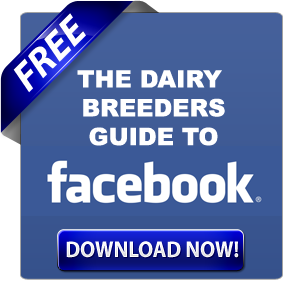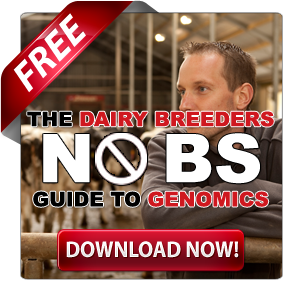Revolutionize your dairy farm’s profitability with the Angus advantage. Discover how beef-on-dairy crossbreeding transforms the industry, offering premiums up to $300 per calf. With the U.S. cattle inventory at a 73-year low, learn why savvy producers are capitalizing on this game-changing strategy.
Summary
The beef-on-dairy revolution, spearheaded by Angus Genetics, is reshaping the economics of dairy farming across North America. As the U.S. cattle inventory reaches a 73-year low, dairy producers leverage beef crossbreeding programs to capitalize on premium prices while advancing their dairy herd genetics. This strategic approach involves using sexed semen on superior dairy cows for replacements while breeding lower genetic merit cows to Angus bulls. The resulting crossbred calves command $100-$300 premiums over purebred dairy calves, creating a significant new revenue stream. Recent data from USDA and CoBank highlight a dramatic shift towards higher-quality beef production, aligning perfectly with the strengths of Angus-Holstein crosses. With improved calving ease, superior growth rates, and enhanced carcass quality, beef-on-dairy programs offer a dual-income model yielding annual benefits of approximately $300,000 for a 1,500-cow dairy operation. This paradigm shift boosts profitability and addresses efficiency and sustainability challenges in the dairy and beef sectors.
Key Takeaways:
- Beef-on-dairy crossbreeding, particularly with Angus genetics, is transforming dairy economics.
- Crossbred calves command $100-$300 premiums over purebred dairy calves.
- The latest USDA data shows continued contraction in the U.S. cattle inventory, which has created favorable market conditions.
- Angus-Holstein crosses consistently outperform other breeds in key economic traits.
- Implementing beef-on-dairy programs can yield annual benefits of ~$300,000 for a 1,500-cow dairy operation.

The beef-on-dairy revolution has fundamentally transformed dairy economics across North America, with Angus Genetics emerging as the undisputed leader in this strategic breeding approach. As U.S. cattle inventory has plummeted to its lowest level in 73 years, dairy producers implementing beef crossbreeding programs are capitalizing on premium prices while advancing genetic progress in their dairy herds. This creates a powerful dual-income model that traditional dairy operations cannot match.
This breeding approach, which involves strategically mating dairy cows to beef bulls—predominantly Angus—has created unprecedented economic opportunities for forward-thinking dairy producers while addressing several long-standing industry challenges.
The concept is straightforward: Dairy farmers use sexed semen from their genetically superior cows to produce replacement heifers while breeding lower genetic merit cows to beef bulls. The resulting crossbred calves command substantially higher premiums than purebred dairy calves, creating a valuable revenue stream that directly counters milk price volatility. According to the latest industry data, day-old beef-on-dairy crossbred calves entering the beef supply chain sell for $100-$300 more than their 100% dairy-bred counterparts—an immediate revenue boost requiring zero additional infrastructure investment.
Why Angus Dominates: The Numbers Don’t Lie
Among the various beef breeds used in dairy crossbreeding programs, Angus has emerged as the overwhelming favorite, particularly in North America. This dominance isn’t accidental or merely fashionable—it reflects complex economic realities documented through rigorous research comparing breed performance in commercial settings.
According to industry surveys, Angus is the most popular beef semen in beef-on-dairy programs. This preference for Angus genetics is based on several key advantages benefiting dairy producers’ bottom lines, not vague marketing claims.
The increasing availability of carcass data on dairy-beef animals has reinforced Angus’s popularity. As more performance records become available, the evidence supporting Angus as the optimal beef breed for dairy crossbreeding has only strengthened. This trend is particularly significant given the current state of the U.S. cattle industry.
According to the latest U.S. Department of Agriculture Cattle Inventory Report released on January 31, 2025, the total cattle and calf inventory stood at 86.7 million head as of January 1, 2025, down 1% from the previous year and continuing a multi-year contraction. The beef cow population expressly declined by 1% to 27.9 million head. This ongoing reduction in the national herd has created a seller’s market for quality beef animals, with beef-on-dairy crosses positioned perfectly to help fill the supply gap.
Furthermore, a February 25, 2025, report from CoBank reveals that U.S. beef quality has dramatically transformed over the past decade. Prime beef production has increased by 140%, reaching more than 2 billion pounds annually. Production of Choice grade beef, which now comprises over three-quarters of the market, grew by 20%, with nearly 16 billion pounds produced in 2024. Meanwhile, lower-grade meat like Select has decreased by 37% since 2014, landing at 3.17 billion pounds in 2024.
This shift towards higher-quality beef production aligns perfectly with the strengths of Angus-Holstein crosses, which are known for their superior marbling and meat quality. The CoBank report also notes that emerging data from USDA Agricultural Marketing Service shows beef-on-dairy cattle maintaining “the largest proportion of their value from feeder price to slaughter cattle auction price on a per hundredweight basis.” This value retention throughout the production chain is a critical economic advantage that ensures consistent demand for these animals at every growth stage.
These latest statistics underscore the economic opportunity that beef-on-dairy programs, particularly those utilizing Angus genetics, represent for dairy producers in the current market environment.
First and foremost, Angus bulls are renowned for calving ease—a critical consideration when breeding dairy cows. Angus cattle have moderate birth weights, which is excellent for calving ease. They also have lower gestation lengths, so you can get cows milking quicker and back in calf sooner. The Angus gestation length can be seven to 10 days shorter than some continental breeds.
This reduced gestation length provides a significant operational advantage for dairy farmers, allowing cows to return to production more quickly and potentially improving overall herd fertility by getting cows back in breeding condition sooner. The shorter interval between calvings can translate to more lactation days over a cow’s productive lifetime—a benefit that compounds the initial value of the crossbred calf.
Beyond calving traits, Angus’s genetics contribute to early maturity and superior marbling in the meat—qualities highly valued in the beef industry and translating to premium prices for finished animals. This advantage is bolstered by the inherent marbling capability already present in Holstein genetics.
“Holstein cattle tend to marble extremely well, themselves. The crosses are grading better now, which is a testament to the better selection of beef semen,” explains Jonathon Beckett, a feedlot nutrition consultant cited in Farm Progress. This complementary genetic combination creates a crossbred animal that captures the best attributes of both parent breeds.
Table 1: Performance Comparison of Different Beef Breeds Crossed with Holstein (Penn State, 2023)
| Performance Metric | Angus | Charolais | Hereford | Limousin | Red Angus | Simmental |
| Initial Weight (lbs) | 1,066 | 1,049 | 1,013 | 1,009 | 1,003 | 1,131 |
| Final Weight (lbs) | 1,555 | 1,494* | 1,431* | 1,389* | 1,437* | 1,572 |
| Average Daily Gain (lbs) | 4.03* | 3.83* | 3.61* | 3.13 | 3.60* | 3.93* |
| Days on Feed | 121* | 122* | 129* | 152 | 130* | 122* |
| Hot Carcass Weight (lbs) | 999* | 946* | 891 | 865 | 896 | 972* |
| Rib Eye Area (sq. in) | 14.5* | 13.7 | 13.1 | 13.1 | 13.5 | 14.3* |
| % Yield Grade 2 or 3 | 100% | 100% | 61% | 80% | 80% | 80% |
*Values within rows with different superscripts significantly differ at P < 0.05. Source: Penn State Extension, 2023 Beef Sired Progeny from Dairy Cows
Table 1 demonstrates that Angus-sired calves consistently outperform other beef crosses in key economic traits, including hot carcass weight, ribeye area, and yield grade consistency. These objective measurements explain why dairy producers overwhelmingly choose Angus when implementing beef-on-dairy programs.
Premium Profits: How Beef-on-Dairy Boosts Your Bottom Line
The economic advantages of Angus-dairy crossbreeding extend well beyond the initial sale of the calf, creating value at every stage of the production chain. For dairy farmers, the immediate benefit comes from the substantially higher prices these crossbred calves command compared to purebred dairy bull calves.
Table 2: Calf Value Comparison: Dairy vs. Beef-Dairy Crossbred
| Calf Type | Price Range | Premium Over Dairy |
| Purebred Dairy Calves | $35-$100 | – |
| Beef-Dairy Crossbred | $128-$330 | $93-$230 |
| Net Premium per Crossbred | $276 average | Up to 840% increase |
Source: World Wildlife Fund & Michigan State University Report, 2023
As Table 2 illustrates, crossbred calves command substantially higher prices in the marketplace, with an average premium of $276 per head over Holstein calves. This premium pricing represents a significant opportunity for dairy operations to enhance revenue without increasing milk production or overhead costs.
“On average, day-old beef and dairy crossbred calves entering the beef supply chain sell for $100-$300 more than their 100% dairy-bred counterparts,” according to recent industry reports. This substantial price differential can translate to dramatic income improvements, particularly for more extensive operations.
Recent data confirms that “beef-on-dairy cattle maintained the largest proportion of their value from feeder price to slaughter cattle auction price on a per hundredweight basis.” This value retention throughout the production chain is a critical economic advantage that ensures consistent demand for these animals at every growth stage.
Industry consultants confirm this market reality: “The premium in the marketplace is down to quality and evidence that the calf is sired by a registered Aberdeen-Angus bull.” This emphasis on documented genetics highlights the importance of using registered Angus bulls with strong genetic backgrounds rather than any black bull—a critical distinction savvy producers recognize.
For calf raisers and feedlot operators who purchase these crossbred calves, the economic benefits continue to accrue through superior growth rates, feed efficiency, and, ultimately, higher-value carcasses. “One of the advantages of the Angus-Holstein cross, however, is that you may get 50 to 70% of them qualify for Certified Angus Beef premiums,” according to Farm Progress. These premium qualification rates represent significant added value that flows back through the supply chain.
The most recent data reveals a dramatic quality transformation in the U.S. beef supply, with significant increases in Prime and Choice beef production in recent years. This quality revolution parallels the rise of beef-on-dairy programs, creating perfect market timing for producers implementing these breeding strategies.
Table 3: U.S. Beef Quality Transformation (Recent Years)
| Quality Grade | Production Change | Market Share Trend |
| Prime | Significant Increase | Increasing |
| Choice | Moderate Increase | Dominant (>75%) |
| Select | Decreasing | Declining |
Source: Industry ReportsTable 3: U.S. Beef Quality Transformation (Recent Years)
| Quality Grade | Production Change | Market Share Trend |
| Prime | Significant Increase | Increasing |
| Choice | Moderate Increase | Dominant (>75%) |
| Select | Decreasing | Declining |
Source: Industry Reports
Table 3 demonstrates the dramatic shift toward higher-quality beef production, creating robust demand for animals that can consistently grade in the upper-quality tiers—precisely what well-bred Angus-Holstein crosses can deliver.
Furthermore, the consistent supply of crossbred calves from dairy operations helps stabilize the beef pipeline, addressing one of the beef industry’s perennial challenges. “Due to the nature of milk production, dairy operations can offer a consistent, year-round supply of calves. Additionally, dairy dams offer highly consistent genetics, so when crossed with sires selected for complementing traits, we can provide U.S. packers with a consistent animal and supply, delivering ease of processing and helping stabilize the market.”
This year-round consistency contrasts with the seasonal calving patterns typical in traditional beef operations and represents a significant logistical advantage for processors seeking to maintain steady production schedules. Supply timing and animal quality predictability create efficiencies throughout the processing and marketing chain that pure beef or pure dairy systems cannot match.
Performance Advantages: Beyond the Hype
Can dairy producers afford NOT to implement beef-on-dairy strategies in today’s market? The performance data suggests they cannot. These crossbred animals effectively bridge the gap between purebred dairy steers (which often suffer from poor feed conversion and excessive frame) and conventional beef animals, delivering measurable advantages documented through rigorous research.
“Although beef-on-dairy calves cannot boast as high dressing percentage as conventional beef cattle, they offer distinct carcass advantages over their dairy cousins. Their increased muscularity and smaller skeletal size lend to a higher lean red meat yield and lower bone percentage,” state industry reports. This improved yield efficiency directly impacts processing profitability and explains why packers are willing to pay premiums for these animals.
Research has documented several benefits throughout the production chain: “Compared to purebred dairy calves, beef-on-dairy calves can provide higher-quality beef products without impacting current milk production efficiencies.” The same research found that “beef-on-dairy calves show greater feed efficiency, which lowers the environmental footprint from their production.”
Table 4: Feed Efficiency Comparison by Animal Type
| Metric | Crossbred Steer | Holstein Steer | Beef Steer |
| Days on feed | 174.3 | 289 | 143.4 |
| Feed cost ($/day) | 0.90 | 0.90 | 0.90 |
| Total feed costs ($) | 157 | 260 | 129 |
| Feed costs saved vs. Holstein | $103/head | – | $131/head |
| Feed savings (1,500 head) | $77,102 | – | $97,857 |
Source: Industry Research Data
Table 4 reveals dramatic differences in feed efficiency. Crossbred steers require 115 fewer days on feed than purebred Holstein steers. These efficiency gains translate to substantial cost savings—$77,10 annually for a 1,500-head dairy operation—while reducing beef production’s environmental footprint.
The quality grade advantage is equally significant. “Beef-on-dairy calves can be expected to grade like conventional beef animals with a majority grading Choice or higher. They are a true intermediate between conventional beef and purebred dairy animals, inheriting the muscularity from the sire and superior marbling from the dam.” This balanced genetic contribution results in carcasses that excel in quality and yield grades, which maximizes value in the current beef grading system.
Jonathon Beckett’s observations from the feedlot sector confirm these advantages: “The quality of these crossbreds has improved dramatically. When dairies first started doing this, they used any readily available Angus semen, and the quality of the calves was not consistent. Now they have a better idea of what matches well with Holsteins.” This evolution in the breeding approach has led to significant improvements in feedlot performance and carcass merit.
Beckett further notes that “Feedlot performance and carcass traits have improved. The cattle are marbling better, have improved rib-eye area, and have better muscling. This helps the packers. I’ve had several lots of cattle that were 30% to 40% Prime, which is outstanding.” These Prime grading percentages far exceed industry averages and demonstrate the exceptional quality potential of well-bred Angus-Holstein crosses.
Research also suggests that beef-dairy crossbred calves have higher survivability rates than those sired by other breeds commonly used in dairy herds. Once the calves are on the ground, they offer attractive growth rates. This improved survivability represents a significant economic advantage, as calf mortality directly impacts the bottom line for dairy farmers and calf raisers.
Challenging Conventional Dairy Wisdom
The notion that dairy farms should focus exclusively on milk production belongs in the past century. Today’s most profitable operations view themselves as protein producers, with milk and meat contributing to the bottom line. This paradigm shift represents more than an incremental change; it fundamentally restructures how progressive dairy operations view their business model.
Are purebred dairy bull calves becoming an economic liability rather than a byproduct? The market signals indeed suggest so. With beef-on-dairy calves selling for 4-6 times the value of straight Holstein calves in some markets, continuing to produce low-value dairy bull calves represents a massive opportunity cost that few operations can justify.
By breeding your best dairy cows for heifer replacements, you can increase the selection intensity and speed up genetic progress in your dairy herd—creating a dual advantage many producers don’t fully appreciate. This means you’re simultaneously improving both beef calf value and dairy genetics. Rather than diluting your focus, this approach accelerates genetic improvement in your dairy operation while adding a profitable income stream.
The rise of beef-on-dairy crossbreeding may also significantly affect milk price dynamics. This breeding approach could help stabilize milk prices by naturally curbing replacement heifer production during low milk prices (as more cows are bred to beef) and increasing replacement production when prices improve.
 Download “The Ultimate Dairy Breeders Guide to Beef on Dairy Integration” Now!
Download “The Ultimate Dairy Breeders Guide to Beef on Dairy Integration” Now!
Are you eager to discover the benefits of integrating beef genetics into your dairy herd? “The Ultimate Dairy Breeders Guide to Beef on Dairy Integration” is your key to enhancing productivity and profitability. This guide is explicitly designed for progressive dairy breeders, from choosing the best














